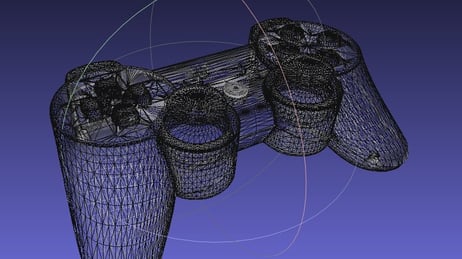3D Printing, or Additive Manufacturing is an up-and-coming technology. Obviously, CAD is going to be a big part of this process for many prototyping shops and additive manufacturers. We’ve been following all of the newest developments, and find it both interesting, and—if we’re being honest— pretty cool.
We’ve found lots of interesting, different uses, from printers that had been modified to print delicious chocolate shapes to massive scale printers that print concrete castles and other large structures. 
One of the big things that we’ve been looking into is compatibility, as we want you, and our software to both be prepared to make the leap to any new technologies that come to the industry. The most specific issue with compatibility is the array of different file types. So far, we found that there are four major file types used with 3D Printing, and we’d like to take a minute to explain them all to you. So take a look at the different pros and cons of the various file types, and hopefully, it will help you to determine how to purchase your 3D printer.
The two most common file types are .obj and .stl. These files are used exclusively with consumer-level 3D printers handled these files. These files are fairly simple, and .stl files, for example, cannot handle multiple color printing, and if you get a printer with a better print resolution, your .stl files can become enormous having to break your geometry down into more and more triangles.
An issue, for some, concerning both .obj and .stl files, is that they are surface-only file types. This is fine if you do not need to print something with an intricate skeleton, or inside structure. Again, this is a case of most consumer-level printers being for people who don’t need to do this. Is it a deal-breaker? That’s up to your needs and uses for 3D printing.
While a consumer-level 3D printer might work for some aspects of design and prototyping, most commercial shops need something a bit more robust. When dealing with color printing, and higher resolution, most industrial and manufacturing users will need to work with .vrml files. KeyCreator can output to .obj, .stl, and vrml. This makes your CAD designs compatible with nearly all printers except those with their own proprietary file types.
Of course, there will be times you may want to reverse engineer a product to be printed out using a 3D scanner. 3D scanning, can be a useful tool in taking in an object, making changes to it with KeyCreator, and then printing it out. This can help speed up the prototyping process, but it still represents a fairly small portion of the 3D printing industry.
While researching, we did find a fourth file type. that is used when working with 3D scanning. Many 3D scanners use a file .ply, which unfortunately KeyCreator doesn’t import, however, we found that most scanners are able to output to .step, .iges, and .stl, all of which we are supported.
Interoperability and ease of use is what is nearest and dearest to us. We’re going to continue to watch the 3D printing and scanning market so we not only keep up with the curve, but get ahead of it. We’ll be sure to update you as we find out what’s new.
Want more insights on Direct CAD and 3D printing? Check out our On-Demand Webinar: 3D Printing Hacks Using Direct CAD

